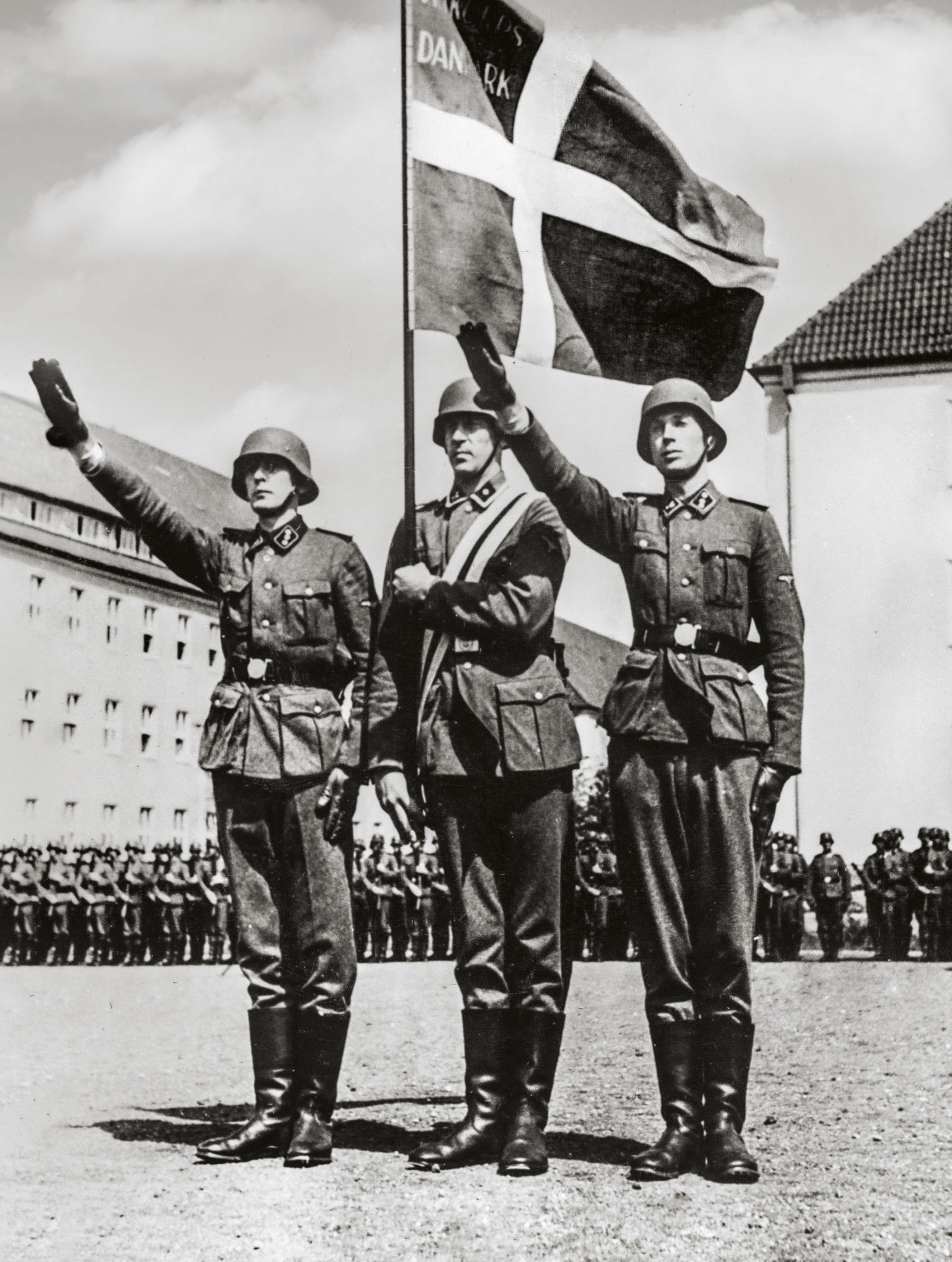Prøve GULL - Gratis
DEFEAT & OCCUPATION
History of War
|Issue 136
Nazi victory in the north ushered in five years of occupation characterised by collaboration and brutal retribution
-

Hitler’s conquest of Western Europe began on 9 May 1940. In a few short weeks, Luxembourg, the Netherlands and Belgium had all succumbed to his blitzkrieg. By 24 May, much of France was also in German hands and the British Expeditionary Force surrounded at Dunkirk faced annihilation. With France about to fall and the threat of a Nazi invasion growing, the British government decided to withdraw its troops from Norway. Despite Churchill’s reservations, orders were issued to draw up a plan. The evacuation was codenamed Operation Alphabet.
On 1 June, the Norwegian government was informed of the plan. A week later, on 7 June, King Haakon VII and the Norwegian cabinet boarded the heavy cruiser HMS Devonshire at Tromsø, 125 miles (200km) north of Narvik. After arriving in London shortly afterwards, they established the Norwegian government-in-exile – a beacon of hope that would inspire Norway’s oppressed citizens for the next five years.
On 8 June, after blowing up railway lines and destroying facilities in the region, the last of around 25,000 Allied troops boarded ships in northern Norway and were evacuated as Operation Alphabet was brought to a close.
 The unsuspecting Nazi leadership had little idea that an evacuation was taking place but by then had already launched Operation Juno. This naval offensive saw a Kriegsmarine battle group, including the battleships Scharnhorst and Gneisenau, steam into the Norwegian Sea. Commanded by Admiral Wilhelm Marschall, its aim was to assist the German Army heading north in driving the Allies out of Norway.
The unsuspecting Nazi leadership had little idea that an evacuation was taking place but by then had already launched Operation Juno. This naval offensive saw a Kriegsmarine battle group, including the battleships Scharnhorst and Gneisenau, steam into the Norwegian Sea. Commanded by Admiral Wilhelm Marschall, its aim was to assist the German Army heading north in driving the Allies out of Norway. Denne historien er fra Issue 136-utgaven av History of War.
Abonner på Magzter GOLD for å få tilgang til tusenvis av kuraterte premiumhistorier og over 9000 magasiner og aviser.
Allerede abonnent? Logg på
FLERE HISTORIER FRA History of War

History of War
FLYING INTO HISTORY ENOLA GAY
The first atomic bomb was dropped on Japan by an American B-29 bomber, preceding the country's capitulation in WWII. Here navigator Theodore Van Kirk recalls his experience of the day that changed history
7 mins
Issue 149

History of War
PUTIN'S SUBMARINE FLEET
From the Cold War to modern operations, the threat beneath the waves has been steadily building, and could be about to escalate
4 mins
Issue 149

History of War
ON SILVER WINGS
THIS MOVING BIOGRAPHY OF AN 'UNKNOWN' WWII RAF FIGHTER ACE CHARTS DESMOND IBBOTSON'S CAREER, THE STORY ENDING WITH A TWIST WHEN HIS REMAINS ARE DISCOVERED IN ITALY IN 2005
2 mins
Issue 149

History of War
CAMBODIA vs THAILAND ROOTS OF THE BORDER WAR
July 2025's clashes are the latest in a long frontier conflict that has gone unresolved, from the era of warrior kings to smart bombs
4 mins
Issue 149

History of War
TASK FORCE GREMLIN
At the end of WWII the Japanese Imperial Army Air Force was conscripted into the Royal Air Force in Southeast Asia
7 mins
Issue 149

History of War
RAF RETURNS TO NUCLEAR
Nearly 30 years after giving them up, the RAF is poised to reacquire air-dropped nuclear weapons
3 mins
Issue 149

History of War
NO MORE NAPOLEONS
A MAGISTERIAL SURVEY OF NAVAL POWER AND POLICY
2 mins
Issue 149

History of War
STALIN'S BLITZKRIEG
In the final month of WWII, the Red Army launched a devastating strike into Manchuria, opening a new front with Japan and threatening invasion of the Home Islands
10 mins
Issue 149

History of War
BALACLAVA POCKET WATCH
This William IV silver timepiece and its owner survived the Charge of the Light Brigade at the Battle of Balaclava
1 mins
Issue 149

History of War
THE END OF THE SPY?
Human intelligence is a dying art, but it is still crucial for security agencies worldwide
3 mins
Issue 149
Listen
Translate
Change font size
